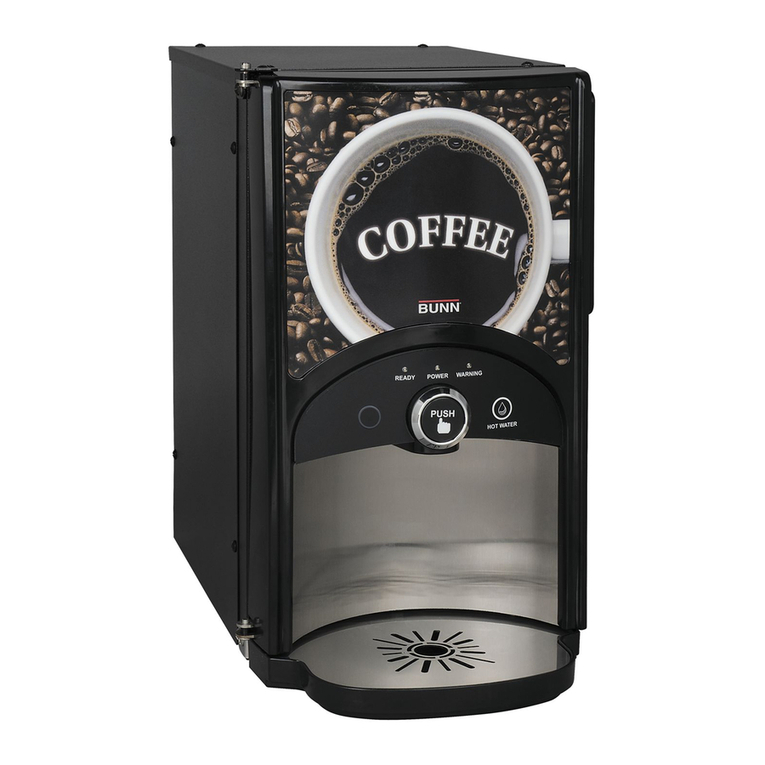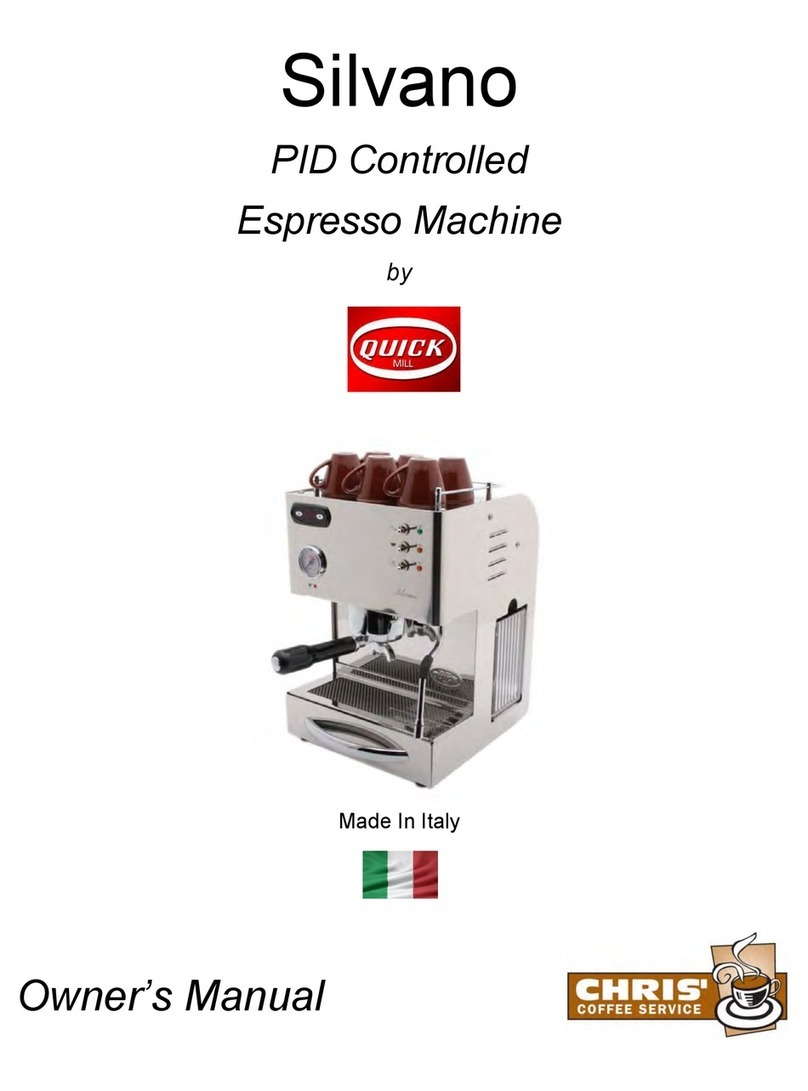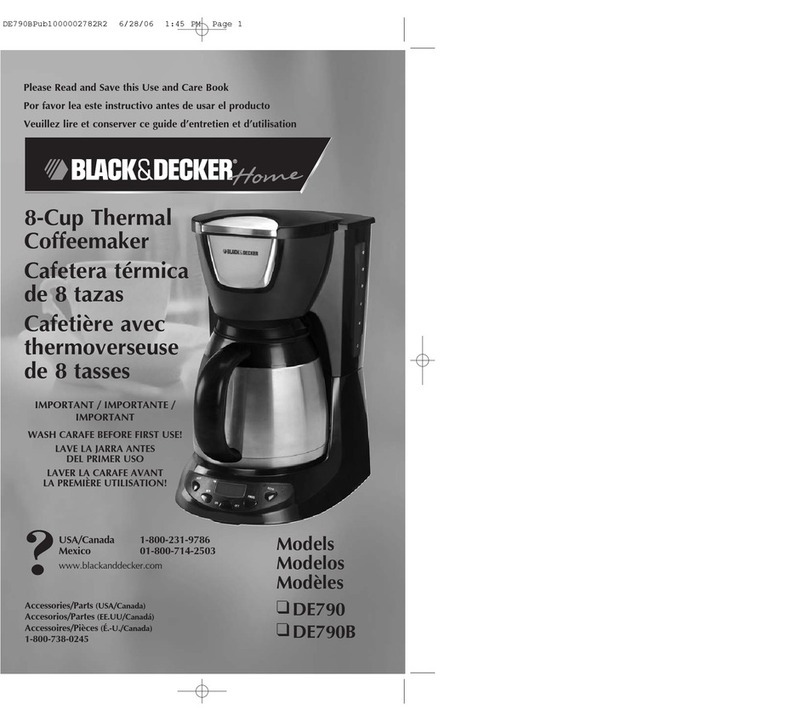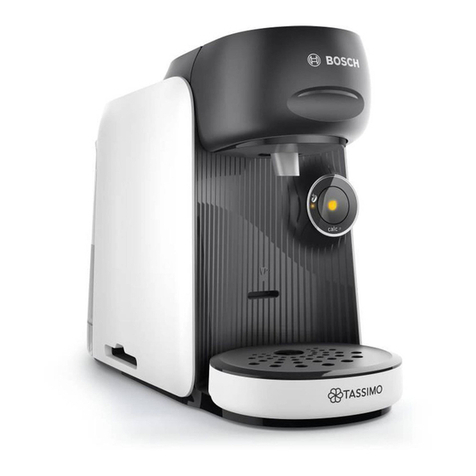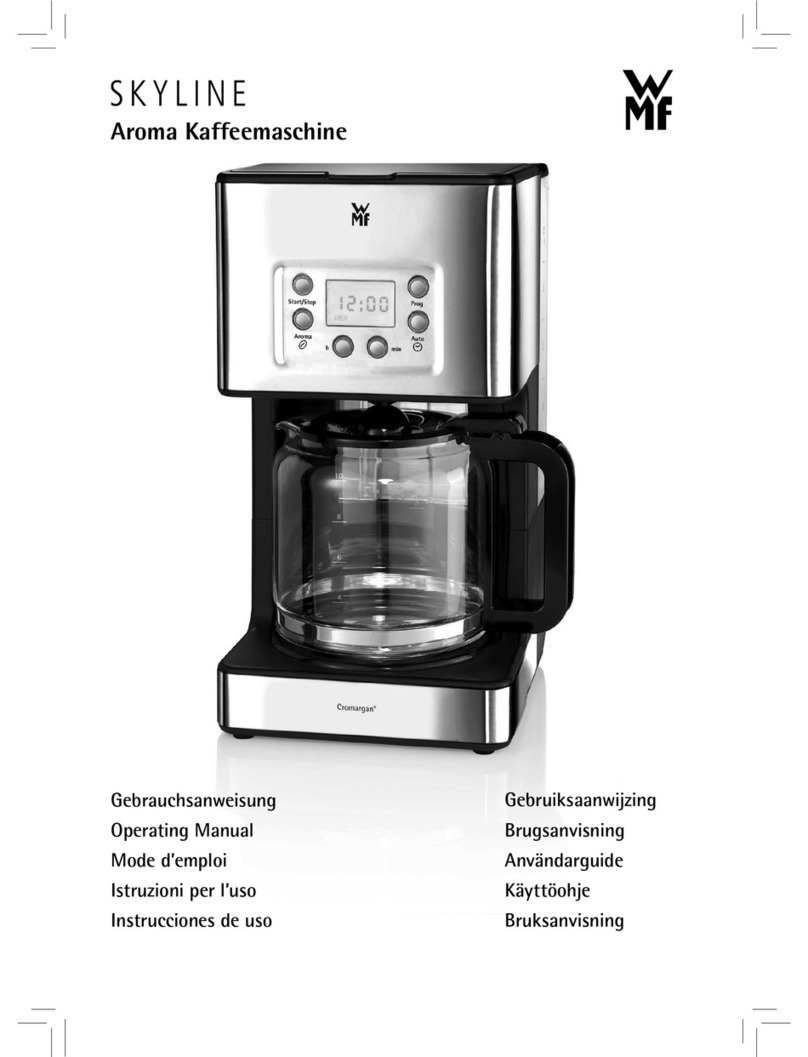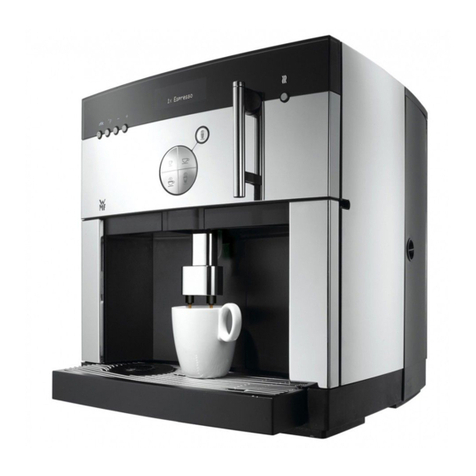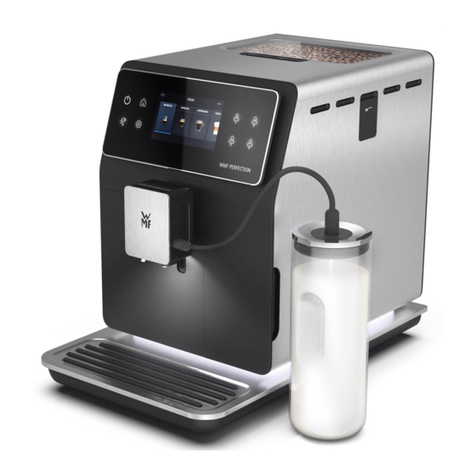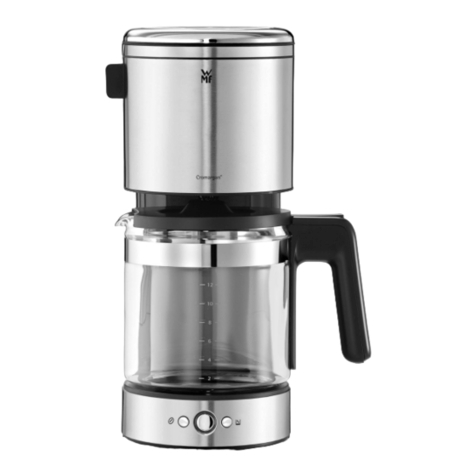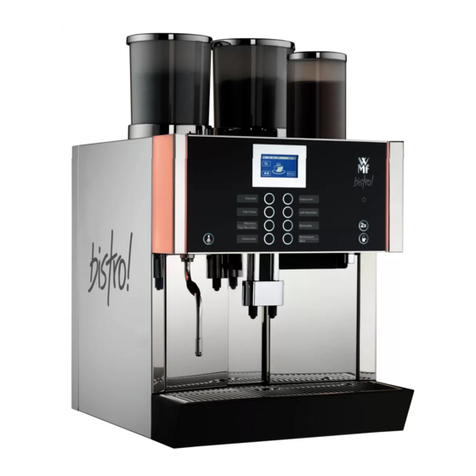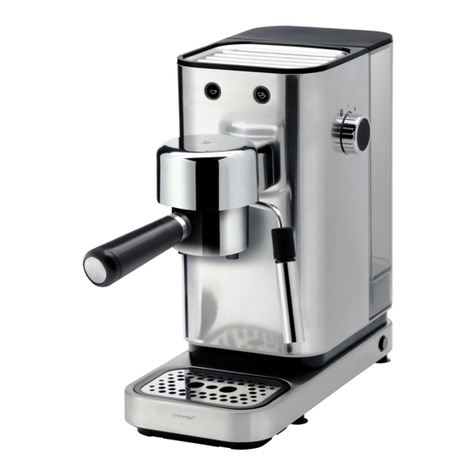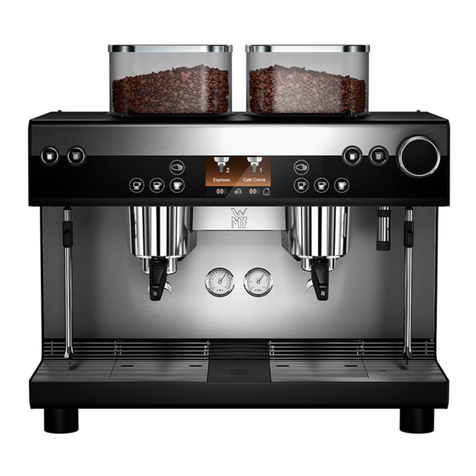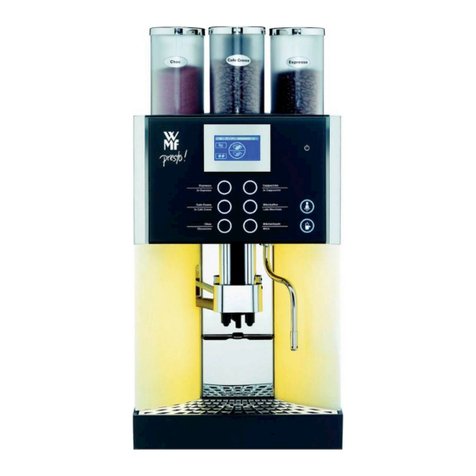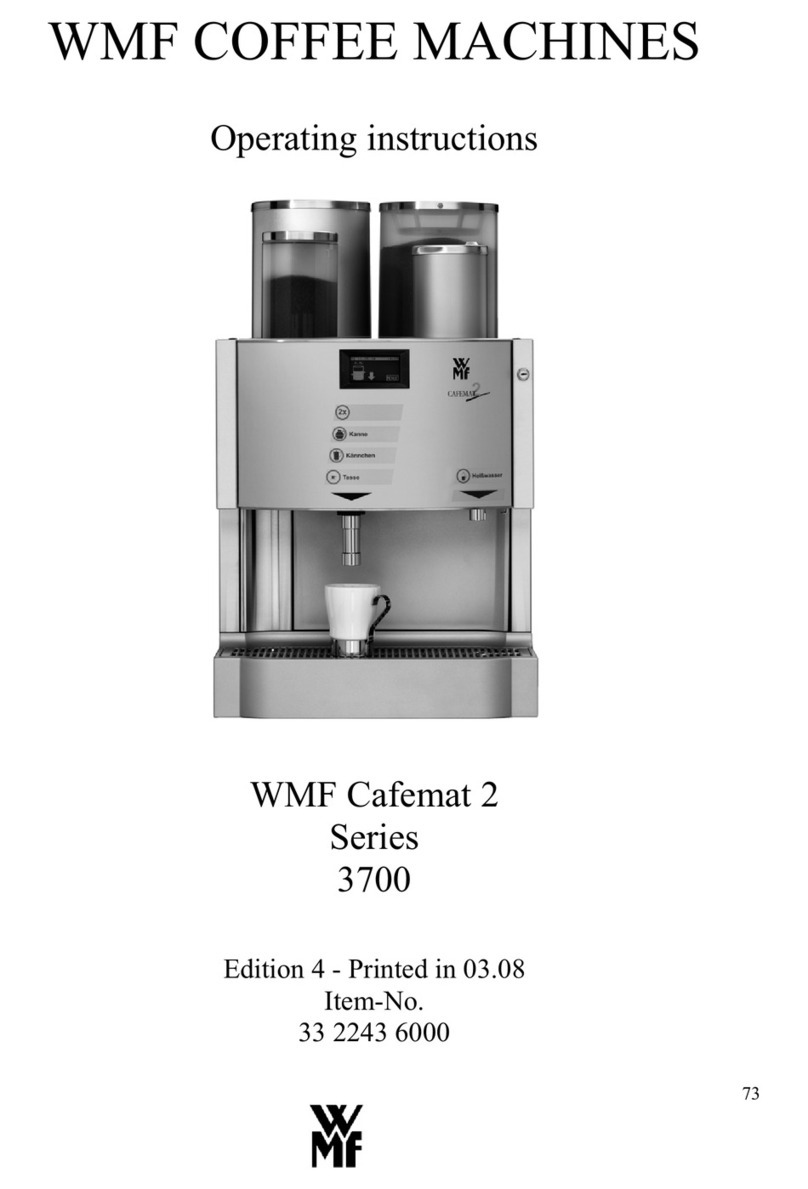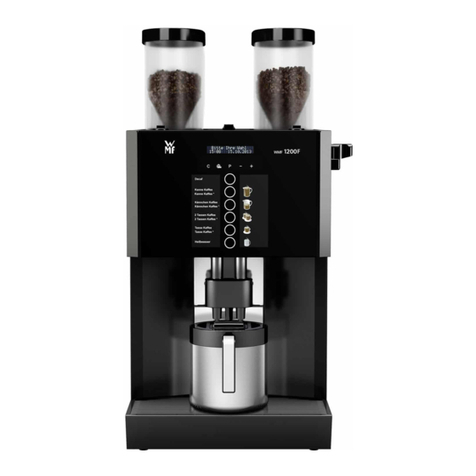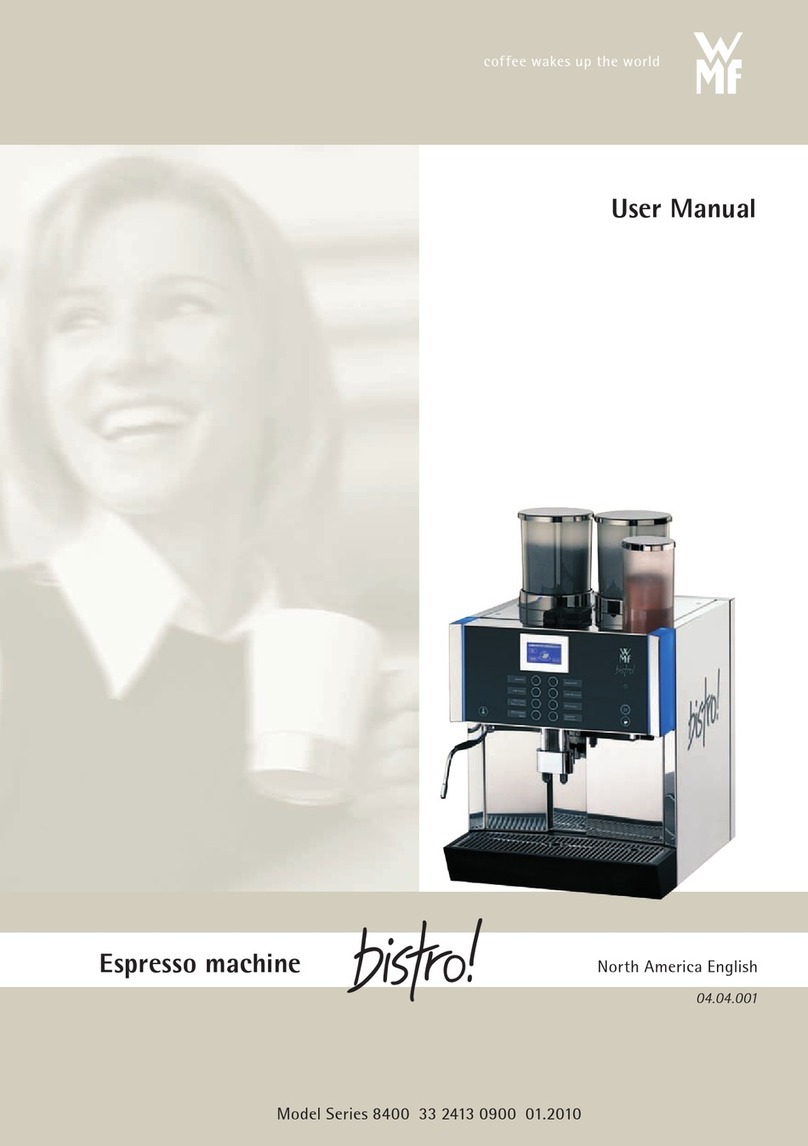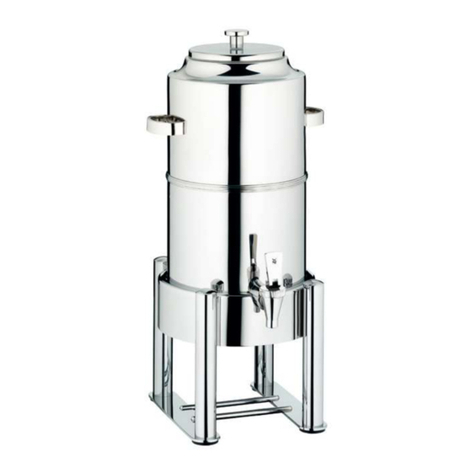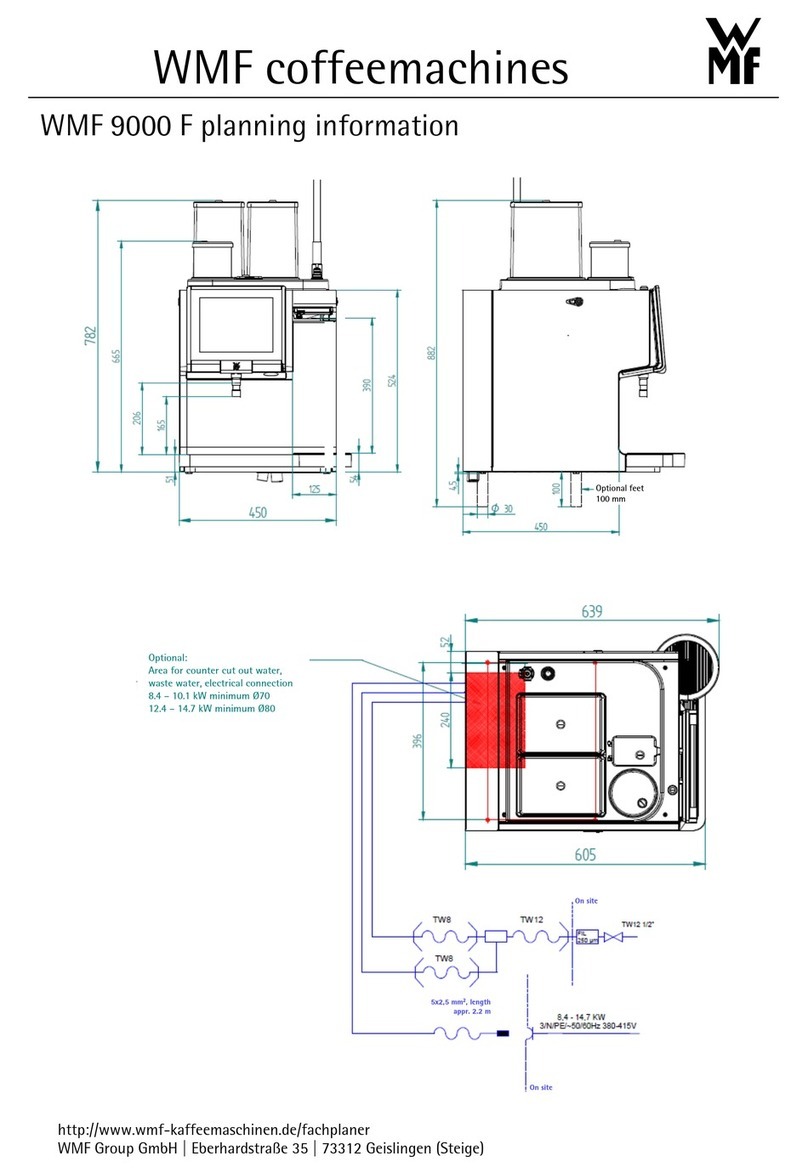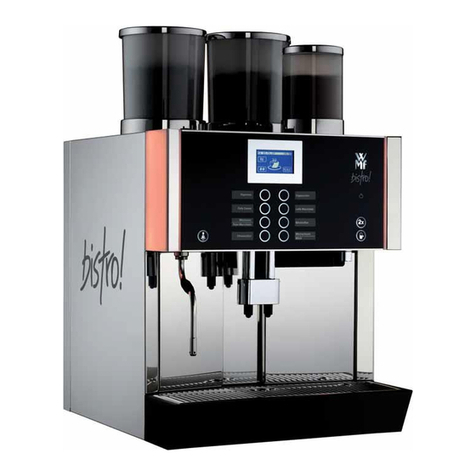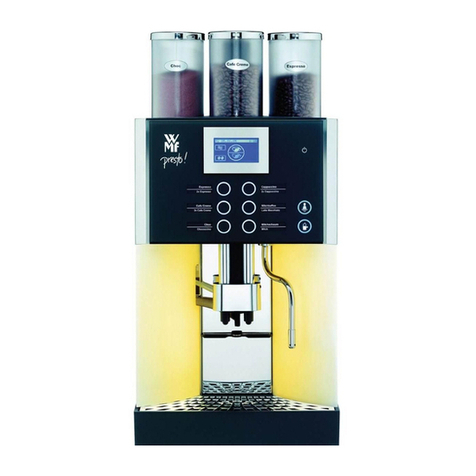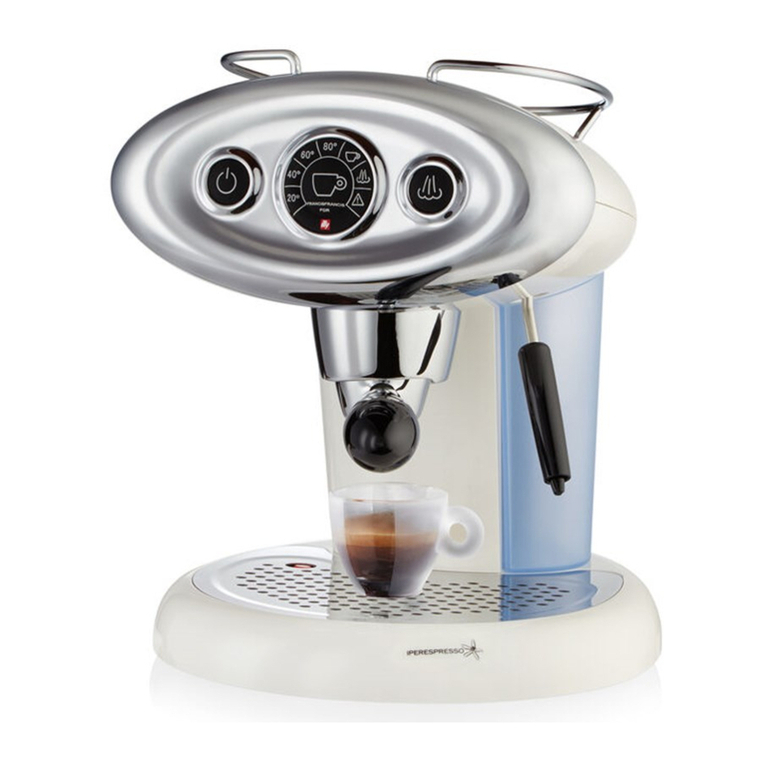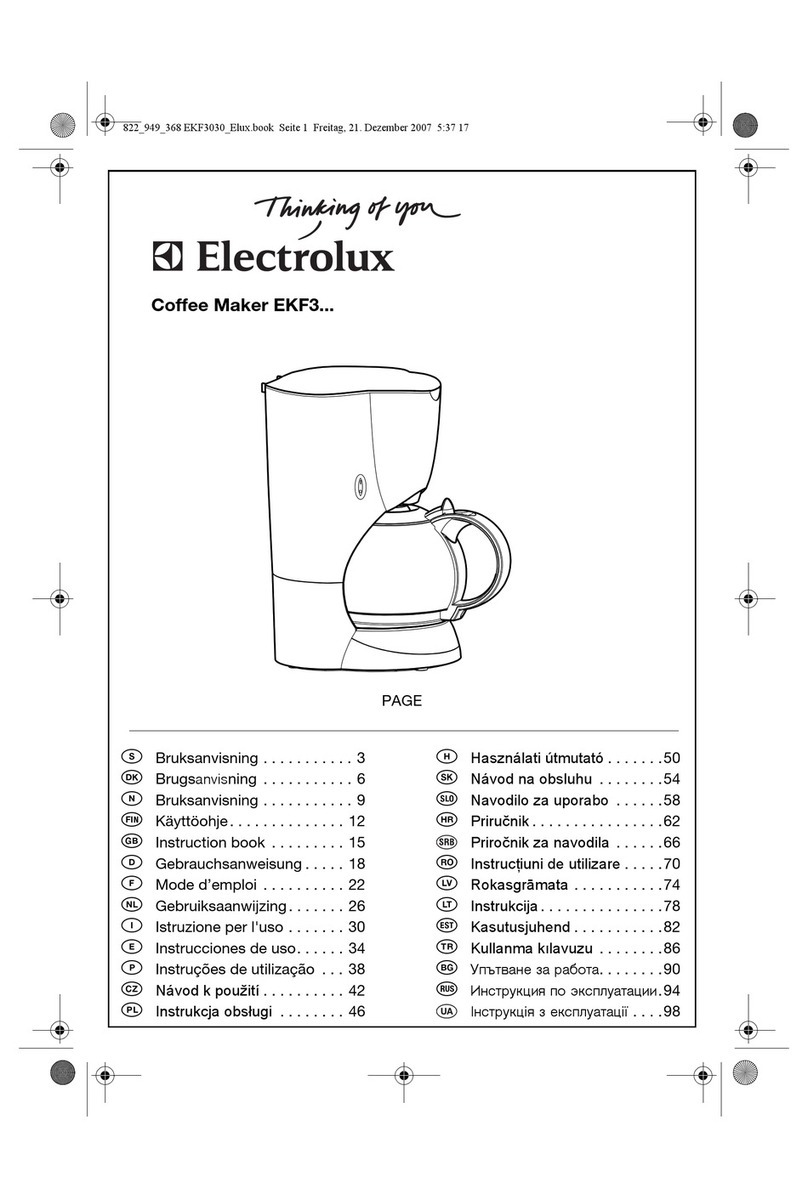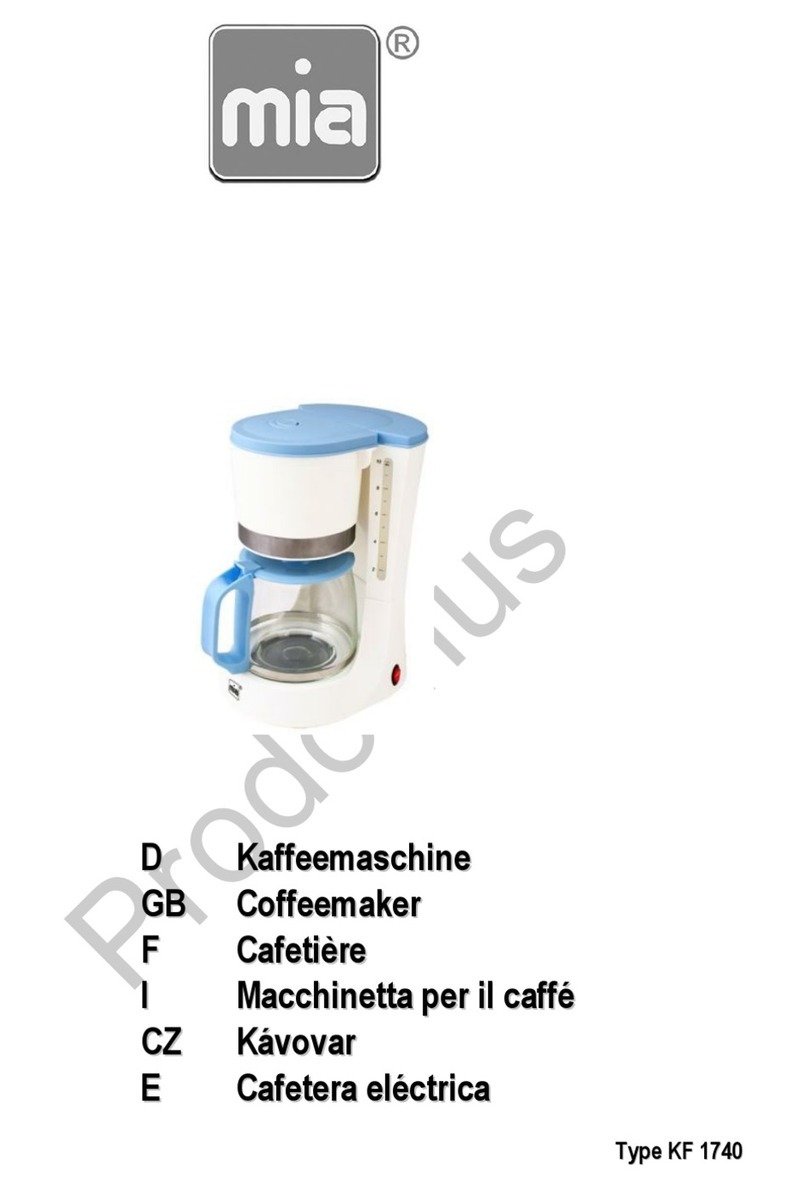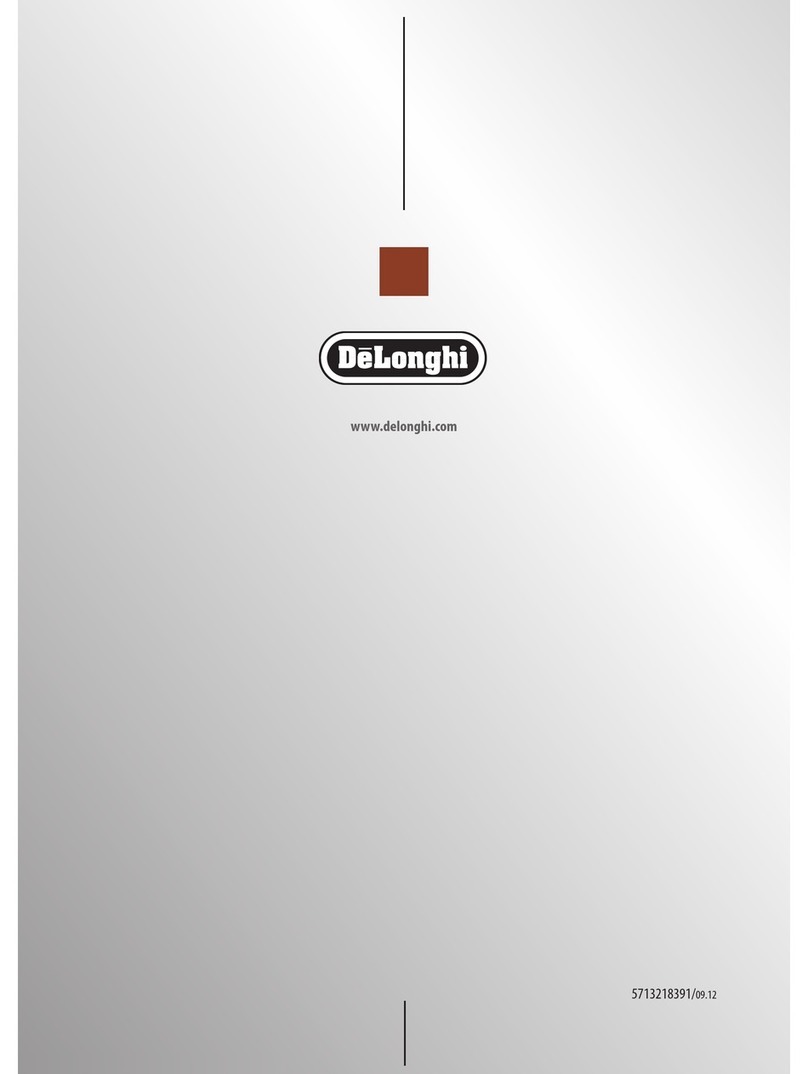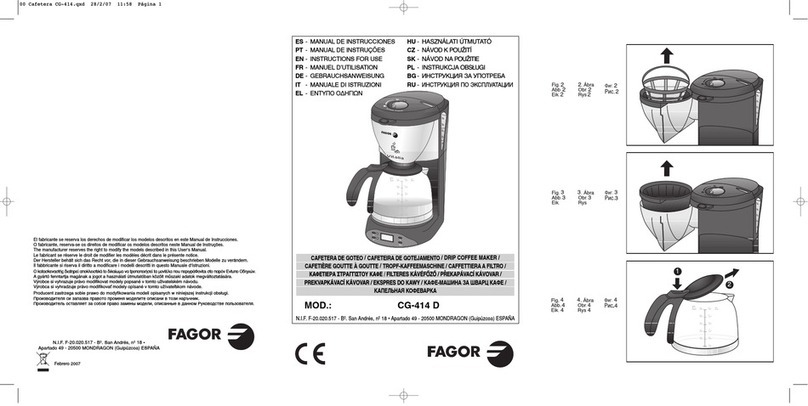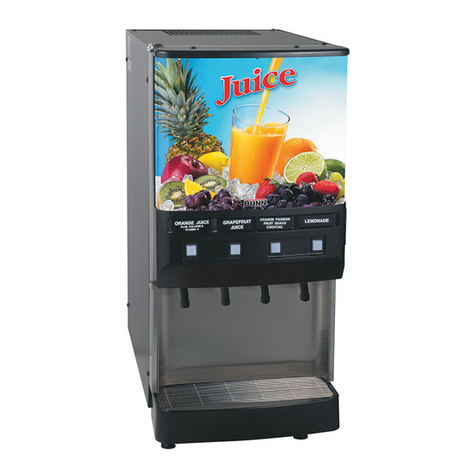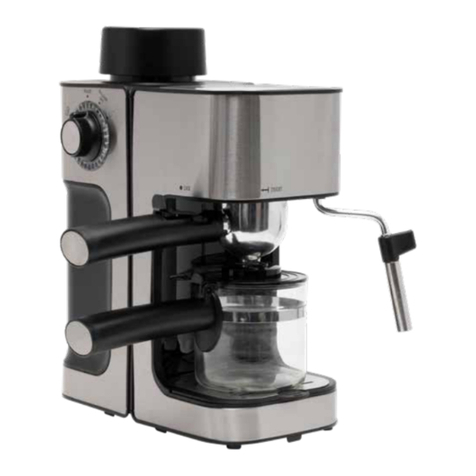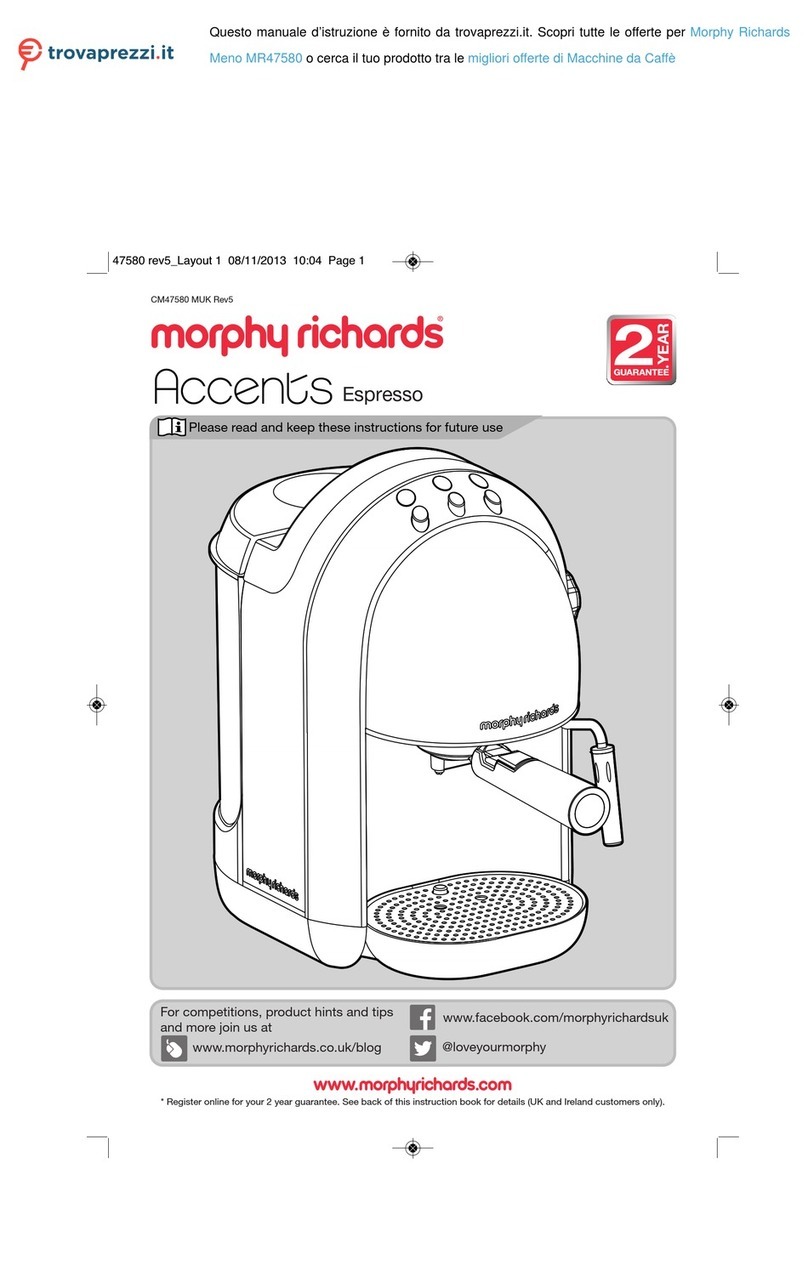14 15
DEGBFR
· Ne pas brancher l‘appareil sans eau. Remplir le conteneur
d‘eau fraîche au maximum jusqu‘au nombre de tasse possi-
ble maximum avec de l‘eau froide.
· Ne pas remplir d‘eau dans l‘appareil branché ou encore
chaud. Débrancher d‘abord la cafetière automatique et
laisser refroidir durant 5 minutes.
· Prudence, l‘appareil devient très chaud. Risque de brûlures
dû à la vapeur qui s‘échappe. Ne jamais ouvrir le couvercle
pendant le passage de l‘eau.
· Cet appareil n‘est pas conçu pour être utilisé par des per-
sonnes (y compris des enfants) dont les facultés physiques,
sensorielles ou mentales sont restreintes ou manquant
d‘expérience et/ou de connaissances, sauf si elles sont sous
surveillance d‘une personne responsable de leur sécurité ou
si elles ont reçu des instructions sur l‘emploi de l‘appareil.
· Veillez à ce que les enfants n‘aient pas la possibilité de jouer
avec l‘appareil.
· Ne pas mettre l‘appareil en service voire retirer
immédiatement la fiche secteur si:
· l‘appareil ou le cordon d‘alimentation
est endommagé
· vous soupçonnez une défaillance après
une chute ou autres.
Dans ces cas, faire réparer l‘appareil.
· Détartrer régulièrement l‘appareil.
· La cruche en verre n‘est pas appropriée pour
le four à microondes.
· Il faut retirer la fiche secteur:
· en cas de dysfonctions pendant le fonctionnement
· avant chaque nettoyage et entretien
· après l‘emploi.
· Ne pas plonger l‘appareil dans l‘eau.
· En cas de détournement de sa destination, de fausse mani-
pulation ou de réparation non conforme, aucune responsa-
bilité pour d‘éventuels dommages ne sera prise. De même
les prestations de garantie sont exclues dans de tels cas.
· L‘appareil n‘est pas conçu pour un emploi commercial.
· Si le cordon d‘alimentation de cet appareil est endommagé,
il doit être remplacé par la centrale service client du fabri-
cant ou une personne de qualification similaire. Les répara-
tions incorrectes peuvent générer des dangers considérables
pour l‘utilisateur.
Avant utilisation
Lire attentivement le mode d‘emploi. Il contient des indications
importantes pour l‘emploi, la sécurité et la maintenance de
l‘appareil.
Il doit être conservé soigneusement et redonné le cas échéant à
l‘utilisateur ultérieur.
L‘appareil ne pourra être utilisé que pour les besoins prévus
conformément au mode d‘emploi.
Cet appareil est conçu pour être employé dans le ménage
et pour des applications similaires, telles que:
· dans les cuisines pour les employés de magasins,
de bureaux et autres secteurs commerciaux;
· dans des exploitations agricoles;
· pour les clients dans des hôtels, motels et autres
établissements;
· dans des pensions à petit déjeuner.
L‘appareil n‘est pas conçu pour un emploi purement commercial.
À l‘emploi, respecter les consignes de sécurité.
Aucune garantie ne sera reprise pour la casse du verre.
Caractéristiques techniques
Tension nominale: 220-240 V 50/60 Hz
Consommation en courant: 1000 W
Classe de protection: I
Consignes de sécurité
· Ne raccorder l‘appareil qu‘à une prise de contact de sécurité
installée conformément aux prescriptions. Le cordon
d‘alimentation et la fiche doivent être secs.
· Ne pas tirer le cordon d‘alimentation sur des arêtes vives ou
le coincer, ne pas le laisser pendre et le protéger contre la
chaleur et l‘huile.
· N‘utiliser un câble de rallonge que s‘il est en parfait état.
· Ne pas retirer la fiche de la prise secteur en tirant sur le
cordon d‘alimentation ou avec des mains humides.
· Ne pas porter l‘appareil au cordon d‘alimentation.
· Ne pas poser la cafetière automatique sur des surfaces
chaudes, p. ex. plaques de cuisson ou autres ou à proximité
de flammes de gaz, elle peut commencer à fondre.
· Ne pas poser l‘appareil sur des surfaces sensibles à l‘eau.
Des projections d‘eau pourraient les détériorer.
· Ne jamais laisser la cafetière automatique sans surveillance.
BAL_coffeemaker_BrandLoyalty_148x210_RZ.indd 14-15 20.04.11 15:59
